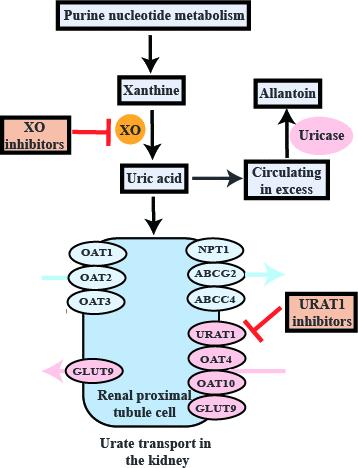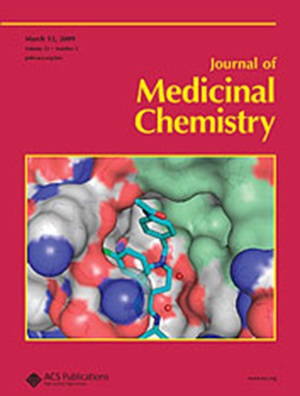Recent Progress and Future Perspectives on Anti-Hyperuricemic Agents
IF 6.8
1区 医学
Q1 CHEMISTRY, MEDICINAL
引用次数: 0
Abstract
Increased biosynthesis or underexcretion of uric acid (UA or urate) in the body ultimately leads to the development of hyperuricemia. Epidemiological studies indicate that hyperuricemia is closely associated with the occurrence of various diseases such as gout and cardiovascular diseases. Currently, the first-line therapeutic medications used to reduce UA levels primarily include xanthine oxidase (XO) inhibitors, which limit UA production, and urate transporter 1 (URAT1) inhibitors, which decrease urate reabsorption and enhance urate excretion. Despite significant progress in urate-lowering therapies, long-term use of these drugs can cause hepatorenal toxicity as well as cardiovascular complications. Therefore, there is an urgent need for novel anti-hyperuricemic agents with better efficacy and lower toxicity. This perspective mainly focuses on the current research progress and design strategy of anti-hyperuricemic agents, particularly those targeting XO and URAT1. It is our hope that this perspective will provide insights into the challenges and opportunities for anti-hyperuricemic drug discovery.

抗高尿酸血症药物的最新进展和未来展望
体内尿酸(UA 或尿酸盐)的生物合成增加或排泄不足最终导致高尿酸血症的发生。流行病学研究表明,高尿酸血症与痛风和心血管疾病等多种疾病的发生密切相关。目前,降低尿酸水平的一线治疗药物主要包括限制尿酸生成的黄嘌呤氧化酶(XO)抑制剂和减少尿酸盐重吸收、促进尿酸盐排泄的尿酸盐转运体 1(URAT1)抑制剂。尽管降尿酸疗法取得了重大进展,但长期使用这些药物会引起肝肾毒性和心血管并发症。因此,迫切需要疗效更好、毒性更低的新型抗高尿酸血症药物。本视角主要关注目前抗高尿酸血症药物的研究进展和设计策略,尤其是以 XO 和 URAT1 为靶点的药物。我们希望本视角能为抗高血症药物研发所面临的挑战和机遇提供启示。
本文章由计算机程序翻译,如有差异,请以英文原文为准。
求助全文
约1分钟内获得全文
求助全文
来源期刊

Journal of Medicinal Chemistry
医学-医药化学
CiteScore
4.00
自引率
11.00%
发文量
804
审稿时长
1.9 months
期刊介绍:
The Journal of Medicinal Chemistry is a prestigious biweekly peer-reviewed publication that focuses on the multifaceted field of medicinal chemistry. Since its inception in 1959 as the Journal of Medicinal and Pharmaceutical Chemistry, it has evolved to become a cornerstone in the dissemination of research findings related to the design, synthesis, and development of therapeutic agents.
The Journal of Medicinal Chemistry is recognized for its significant impact in the scientific community, as evidenced by its 2022 impact factor of 7.3. This metric reflects the journal's influence and the importance of its content in shaping the future of drug discovery and development. The journal serves as a vital resource for chemists, pharmacologists, and other researchers interested in the molecular mechanisms of drug action and the optimization of therapeutic compounds.
 求助内容:
求助内容: 应助结果提醒方式:
应助结果提醒方式:


